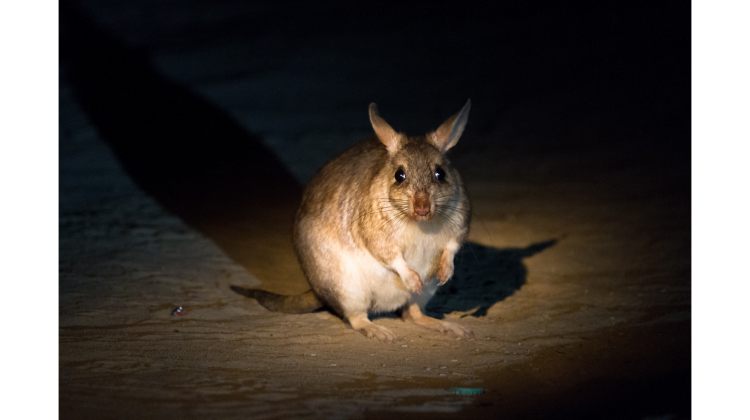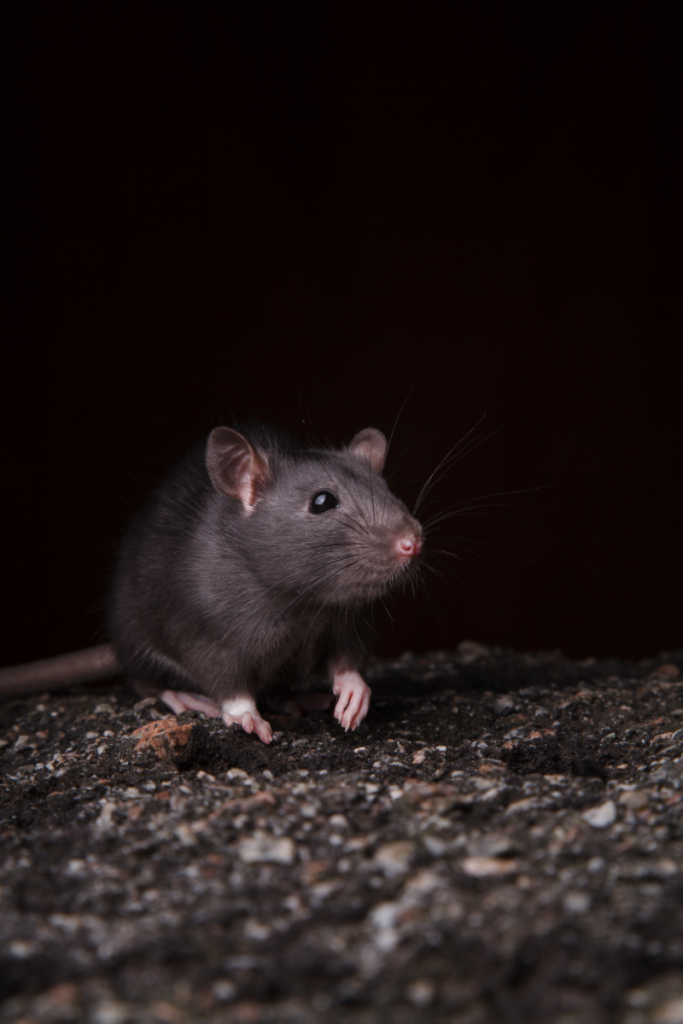
Can Rats See in the Dark? Yes, Rats have excellent night vision, allowing them to see in the dark due to their specialized eyes. In the animal kingdom, many species have evolved unique adaptations to navigate and hunt in low-light conditions.
One such creature that excels in the darkness is the rat. These small rodents possess an intriguing night vision that enables them to see clearly even in dimly lit environments. Their eyes are specially equipped with low-light sensory structures called rod cells, which enhance their ability to perceive objects in the dark.
This remarkable feature allows rats to efficiently scavenge for food, evade predators, and explore their surroundings during nighttime hours when most other animals struggle to perceive their surroundings. We will delve into seven intriguing aspects of a rat’s night vision and explore the fascinating adaptations that make them such adept creatures of the night.
Contents
- 1 1. Rodents’ Sensory Adaptations
- 2 2. Night Vision Mechanisms In Rats
- 3 3. Rats’ Visual Acuity In Darkness
- 4 4. Rats’ Utilization Of Ultraviolet Light
- 5 5. Enhanced Peripheral Vision In Rats
- 6 6. Utilization Of Vibrissae For Night Vision
- 7 7. Comparisons With Other Nocturnal Animals
- 8 Frequently Asked Questions On Can Rats See In The Dark? 7 Intriguing Aspects Of Night Vision
- 9 Conclusion
1. Rodents’ Sensory Adaptations
Rats have fascinating sensory adaptations that allow them to navigate and hunt in the dark. One intriguing aspect is their enhanced sensory perception. Their vision is not as sharp as humans during the day, but they are incredibly sensitive to movement and can detect even the slightest changes in their environment. This heightened sense of vision helps them spot potential threats or sources of food.
In addition to their night vision, rats possess excellent hearing abilities. They can detect high-frequency sounds that are inaudible to human ears. Their whiskers, known as vibrissae, are also essential for navigating in dark spaces. The whiskers help rats map their surroundings and avoid obstacles, making them agile and efficient navigators even in complete darkness.
These sensory adaptations provide rats with evolutionary advantages. They have developed survival mechanisms that make them well-suited for their nocturnal lifestyle.
2. Night Vision Mechanisms In Rats
Understand how rats have the exceptional ability to navigate in darkness, and you might unravel the secrets of their night vision mechanisms. These fascinating creatures employ a range of unique adaptations to thrive in low light conditions. Specialized retinal cells play a crucial role in their exceptional vision, allowing them to see even in pitch-black environments. Rats possess an increased sensitivity to low light conditions, thanks to the presence of a specialized pigment known as rhodopsin. This pigment amplifies their vision in dimly lit areas. Additionally, rats have developed unique adaptations of their optic nerve, enabling enhanced processing of low light signals. These adaptations collectively contribute to their impressive ability to navigate and forage during the night, giving them a significant advantage over their competitors.
3. Rats’ Visual Acuity In Darkness

Rats are fascinating creatures that possess remarkable night vision capabilities. In darkness, rats’ visual acuity is surprisingly sharp and efficient. They can perceive depth and objects with an impressive degree of accuracy. Not only can rats navigate complex environments in the dark, but they can also do so with ease.
One intriguing aspect of rats’ night vision is their ability to perceive depth. They achieve this by relying on their binocular vision, which allows them to accurately judge the distance between objects. This depth perception helps rats navigate their surroundings and avoid obstacles, even in pitch-black conditions.
Rats’ visual acuity in darkness also enables them to distinguish and recognize objects. Their eyes are equipped with specialized cells known as rods, which are highly sensitive to low levels of light. This adaptation allows rats to detect even the faintest outlines of objects in the dark.
Overall, rats’ exceptional night vision abilities are a testament to their remarkable adaptability. Their capacity to perceive depth and navigate complex environments in the dark provides valuable insights into their survival strategies.
4. Rats’ Utilization Of Ultraviolet Light
Under the intriguing topic of rat night vision, one aspect that stands out is their utilization of ultraviolet (UV) light. Rats have been found to be responsive to UV light, allowing them to see in a wavelength range that humans cannot perceive. This presents an interesting comparison between rat vision and human vision under ultraviolet light.
Rats’ ability to utilize UV light opens up a whole new world of visual cues for them. While humans rely on visible light to perceive their surroundings, rats can detect UV light, which enables them to see things that are invisible to us. This unique adaptation plays a crucial role in their survival and navigation, particularly in environments where UV light is abundant, such as in outdoors or at night.
By being sensitive to UV light, rats are able to gain a different perspective of their surroundings, which can be particularly useful for tasks like identifying food sources, detecting potential predators, or even navigating through complex environments. This special adaptation showcases the remarkable abilities of rats and highlights the vast diversity of visual perception among different species.
5. Enhanced Peripheral Vision In Rats
Enhanced peripheral vision is one of the intriguing aspects of a rat’s night vision. Rats possess an expanded field of view, allowing them to be more aware of their surroundings. This expanded vision plays a crucial role in their survival, aiding in the detection of both predators and prey.
The peripheral vision of rats enables them to detect potential threats or approaching danger from the corners of their eyes. This heightened awareness increases their chances of escaping from predators or avoiding potential hazards. Moreover, rats can swiftly locate potential food sources using their peripheral vision, making them efficient scavengers and foragers.
The expanded field of view provided by enhanced peripheral vision grants rats a significant advantage in their natural habitat. It allows them to navigate through complex environments and adapt their behavior accordingly. Whether it’s identifying predators or locating food, their peripheral vision serves as a valuable tool in their survival strategy.
6. Utilization Of Vibrissae For Night Vision
| Rats possess a remarkable ability to navigate in darkness, and their vibrissae play a crucial role in this fascinating process. These long, sensitive whiskers serve as highly specialized tactile sensors, aiding rats in detecting and interpreting their surroundings. When exploring their environment, rats deftly move their whiskers back and forth, collecting valuable sensory information. The importance of vibrissae for a rat’s perception in darkness cannot be understated. Every slight movement or disturbance in their surroundings is registered through these sensory hairs, allowing rats to build a detailed mental map of their environment. Through a combination of whisker touch and proprioception, rats are able to maneuver with incredible precision, even in complete darkness. |
7. Comparisons With Other Nocturnal Animals
Rats have a remarkable ability to see in the dark, thanks to their unique night vision capabilities. Comparing rats with other nocturnal animals reveals interesting contrasts in their sight abilities. When compared to animals like cats, rats have a relatively weaker night vision. However, rats make up for this with their heightened sense of hearing, smell, and touch, enabling them to navigate and hunt effectively in low-light conditions.
Unlike owls, which have large eyes to capture as much light as possible, rats have smaller eyes. Yet, rats possess a tapetum lucidum, a reflective layer at the back of their eyes that enhances their night vision. This layer reflects light and increases the chance for photoreceptors to register even the faintest of light. Moreover, rats also have a wider visual field, allowing them to detect movement and perceive their surroundings more effectively in the dark.
In conclusion, while rats may not have the same level of night vision as other nocturnal animals, their unique adaptations and sensory abilities still make them proficient in navigating and surviving in low-light environments.
Frequently Asked Questions On Can Rats See In The Dark? 7 Intriguing Aspects Of Night Vision
Can Rats See In The Dark?
Yes, rats have excellent night vision due to their large pupils and tapetum lucidum, a reflective layer behind their retinas. This allows them to gather more light and see in low-light conditions.
How Far Can Rats See In The Dark?
Rats can see up to 50 feet in the dark, thanks to their well-developed night vision. Their eyes are adapted to help them navigate and locate food in dimly lit environments.
Do Rats Have Better Night Vision Than Humans?
Yes, rats have better night vision than humans. While humans rely on artificial lighting in the dark, rats can see clearly without much light. Their enhanced night vision assists them in locating food and avoiding predators in low-light conditions.
How Do Rats See At Night?
Rats see at night by utilizing their specialized eyes and a reflective layer called the tapetum lucidum. This layer reflects light back through the retina, enhancing their vision in low-light situations.
Conclusion
It is fascinating to delve into the intricacies of a rat’s night vision. From their impressive ability to navigate in darkness to their unique adaptations, rats have proven themselves to be resilient nocturnal creatures. Understanding their sensory adaptations can help shed light on their behavior and survival instincts.
By exploring the intriguing aspects of rat night vision, we gain a deeper appreciation for the incredible diversity and adaptability of the animal kingdom. So next time you come across a rat scurrying through the darkness, remember that they possess a remarkable skill set that allows them to thrive in environments where most creatures would struggle.
